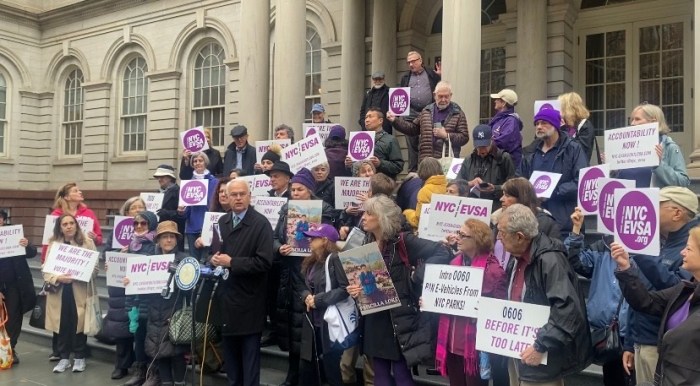By Albert Silvestri
NYPD harbor divers found rescuer Wade McDonald, 40, but he was unconscious when pulled ashore and was pronounced dead upon arriving at Peninsula Hospital Center soon after the 6:30 p.m. incident. McDonald apparently suffered a heart attack as he struggled against the strong rip current to pull the teen to safety, police said.”Wade McDonald is a modern-day hero,” Queens Borough President Helen Marshall said. “He saw a child's life in danger, rushed to save him and lost his own life in the process. His name should be emblazoned in our memory as one of New York's best and finest heroes.”The Harbor Patrol and the Aviation Patrol of the Police Department searched tirelessly for Jermaine Cohen, but were forced to stop because of darkness Sunday night. The search continued into Tuesday, but there was no trace of the 16-year-old as of press time.Cohen, a student at Automotive High School in Brooklyn, had gone to Rockaway Beach at Beach 93rd Street with a group of friends and had entered the water at about 6:30 p.m., a half hour after the lifeguards had left for the day. Because of the strong rip current, the three boys were pulled far out into the ocean, police said. Police identified the surviving teens as Jaimmie Taylor, 18, of Canarsie, and Branden Clayton, 18, of Crown Heights. Taylor was able to reach the shore on his own, officials said, while Clayton was rescued by a nearby surfer. The New York Times reported Tuesday that rip currents pull about 100 swimmers to their deaths, and according to the United States Lifesaving Association, lifeguards pull out at least 70,000 Americans from the surf each year, 80 percent of whom are caught in rip currents. Rip currents are formed after the tide runs up the shore and flows back out to sea. The water is squeezed into a relatively narrow passage at a low place such as a sandbar or under a pier and the result is a fast-moving water current that cuts across the surf zone. The New York City Department of Health said 16 people have drowned at city beaches since 2000. Of the 16 drownings, eight were at Rockaway Beach, and only one of the Rockaway drownings occurred when lifeguards were on duty.The city's first drowning this year has prompted lawmakers to look more closely at the issue.”It's a tragedy, and unfortunately most of the drownings happen when there are no lifeguards,” said state Assemblywoman Audrey Pheffer (D- Rockaway Beach) . “If there is money, perhaps we should look at expanding the [lifeguard's] hours.”Councilman Joseph Addabbo Jr. (D-Howard Beach) believes the Rockaways have some of the most dangerous waters on the East Coast and hopes to work with the Parks Department and the Board of Education in acquiring informational DVDs about rip currents and water safety for the city's young students. The Parks Department found that in the summer of 2002 some 15 million patrons visited New York City's seven public beaches. The two most popular beaches are Coney Island, which saw 9.5 million patrons in 2002, and Rockaway Beach which had 4.4 million. The two deaths in the Rockaways set “a tone to some extent for the rest of the summer,” Addabbo said. “Those who use the beach should me mindful. My thoughts and prayers go out to the families.”


































